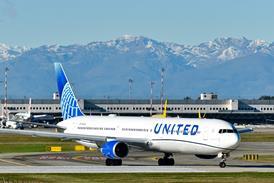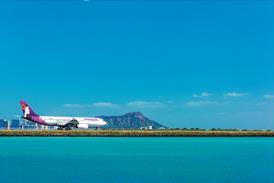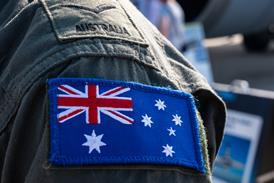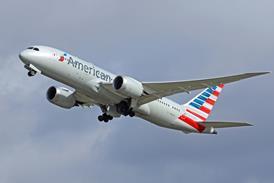Call it what you like - sour grapes, insecurity, or legitimate complaint - there are few greater sources of aggravation for corporate finance executives than news of a rating committee's downgrade. 'For the treasurers, the most frustrating thing is that they truly believe they have done the best they can and want a reward for it, whereas the rating agency just wants to reduce the volatility of its ratings,' says Jim Ryan of Salomon Brothers.
Though US airlines appear to be on the rebound, this resurgence has yet to be significantly reiterated by the rating agencies and it probably won't be for another year. For Moody's Investors Service, close to half of the US airline industry is below investment grade. For Standard & Poor's Ratings Group, the figure is significantly higher - all except Southwest Airlines. In a business where a single step downward in ratings - a 'notch' - can add close to 30 basis points to an interest charge, few are willing to be charitable about what may be seen as ill-informed opinion.
But while airline chief financial officers and treasurers mutter dissatisfaction with their ratings, the fact that they only speak about it on condition of anonymity says much about the industry's recognition of the institutional power of both Moody's and S&P's.
Nonetheless, the alternatives are garnering recognition. As the US industry has found itself locked out of raising unsecured debt, Fitch Investors Service and Duff & Phelps Credit Rating Co have in the past year begun aggressively marketing themselves. Carriers are now seeking capital in the asset-backed and structured deal markets, where the smaller rating companies are established niche players. At the same time, Fitch and Duff & Phelps are tapping into a cross-sector, anti-Moody's sentiment that appears well-supported among airline finance officials.
Rating agencies receive their revenue from those being rated - a recent $100 million unsecured placement by Southwest was typical; both S&P's and Moody's received $30,000 for the rating - as well as from the investors who are shouldering a company's risk. But in the courts of finance, S&P's and Moody's are perceived as conservative judges who make decisions based more on past behaviour and less on future promise. For an industry that has lost tens of billions of dollars over the past five years, there is little immediate chance of being allowed greater leeway.
The power of credit ratings was best seen after all the US majors except Southwest were downgraded to junk bond level two years ago. 'Below investment grade' was the nice way of describing a category of securities that, by early 1993, was already populated by the likes of then bankruptcy-protected TWA, Continental and America West. Expectations of industry consolidation, through bankruptcy and liquidation, were foundering as carriers survived under Chapter 11 and with the aid of foreign investment. Then, Southwest's influence on cost cuts and fares made it clear that the revenue-generating benefits other majors had derived from their size was on the wane.
When S&P's airline industry analyst Phillip Baggaley rated American Airlines, Delta Air Lines and United Airlines as junk that year, it was a statement on the changing fundamentals of an industry. 'There was a change that we felt tipped the balance, and the extra credit we gave to airlines evaporated,' he says in retrospect.
Though criticised as long overdue from some in the investor community and not immediately followed by Moody's, the downgrade into junk hit the industry hard. It has simply meant that, with the exception of asset-backed deals and structured finance, the cost of airline debt capital has been generally prohibitive. An issue like Southwest's fully subscribed $100 million deal in late February is as rare now as that carrier's profitability was two years ago.
The experience has also highlighted the method of rating by the two primary agencies. In an elaborate, four-page 'rating methodology', Baggaley has put forth a rating rationale that is heavy on industry risk: 'the airline industry [has] higher risk than average, with poor operating fundamentals offset partly by financeability of assets.' In a less defined approach, Moody's analyst Renee Shaker, similarly emphasises the inherent risks of the industry. Both have grave concerns about fixed costs coverage as well as on and off balance-sheet debt.
The ratings criteria developed by both agencies are less for the benefit of the issuers of debt and more for the investors. Still, one airline treasurer points to the S&P's list as an example of why the group's airline rating committee is considered more consistent than Moody's, even though Moody's in general rates the airlines higher. An investment banker echoes this sentiment, saying that S&P's Phil Baggaley is a known quantity. 'Airlines seem to be clearer where S&P's will come out as opposed to Moody's. That implies that Moody's is a little more cagey when it meets with the airlines.'
Fitch industry analyst Donald Powell, on the other hand, underlines his company's policy to place more emphasis on revenue issues, including the comparison of amortisation schedules with cash flow. Duff & Phelps also favours this airline-friendly criteria over the encumbered assets approach taken by the big two agencies. According to Matthew Dupre, who as marketing vice president for D&P is pushing hard to get airlines to buy ratings, D&P is focusing more on 'the going-forward issues'.
Neither company has a criteria listing, though Fitch is in the process of developing one that Powell says 'will have a fresh approach' to the industry, including more prominent consideration of a carrier's 'story' or corporate strategy.
Meanwhile Moody's is clearly facing a perception problem, both within and outside the airline industry. Finance executives at US carriers variously describe the rating agency as 'hide-bound,' 'closed,' and 'distant.' They complain of a lack of communication that appears to stem from a management that often makes unwarranted comparisons between the airline industry and other industries.
Airline finance executives consistently complain that besides the 'ossified' management structure at Moody's, the biggest discomfort they have with the agency is that the personnel turnover has been high.
Shaker, in her second year on the job, however, receives high marks for her interpretion of the industry to the airline rating committee. However, the culture at Moody's is less in favour of personal interaction with the issuer clientele than at S&P's, and there is emphasis on 'strict objectivity'.
For credibility's sake, Moody's policy has been to maintain an arms-length distance with those it rates, says Shaker. However Shaker recognises the concerns over lack of transparency in the Moody's rating process. 'In my view, it is an important function of any analyst to convey the rationale behind the decision for a rating change accurately.'
Shaker's efforts to deal with the problems have begun to mollify some of the Moody's critics in the airline industry. 'In the past six months, things have gotten better,' says one who has been critical. And, it should be noted, not all industry finance executives are upset about Moody's. One source admits having heard of others' problems with the rating agency but not having had the same experience: '[They] have been very generous with their time and trying to understand what we are doing here.'
Issuer dissatisfaction with Moody's has helped to provide an impetus for Fitch and Duff & Phelps to start marketing their rating services. Many airline treasurers relish the thought of others coming in to rate. 'The best thing that can happen is that there is some good, old-fashioned competition,' says one airline treasurer. 'The only way [Moody's] will change is if they lose enough revenue with ratings being taken to someone else.'
But there are those who believe the S&P's and Moody's names so dominate investors' views of rated companies that their influence will never be seriously affected. Some argue that this is as much due to need as to reputation. The present duopoly mitigates the practice of 'rate-surfing', in which a debt issuer employs a particular rating agency to get a better rating. It is important to protect the status that the two primary agencies maintain, Ryan believes: 'Every issuer would like to shop ratings around, to get the highest rating. There is some reason for a duopoly. You certainly don't want to have that kind of competition.'
While few airline managers readily admit rate surfing occurs, most bankers and rating analysts believe it does. Fitch has in the past acknowledged that it essentially sold its services by virtue of the fact that it could give higher ratings, or at least have a more liberal approach to critiquing the company. But Don Powell, Fitch's airline analyst, insists that this does not happen now.
However, in maintaining complete independence from a company, Moody's and S&P's review placements whether or not they are paid to do so. This means that the rating of an airline or debt placement can occur with or without the request of the company in question. Some airline officials feel that this is tantamount to a threat of downgrading if an agency does not get the rating business the next time.
But at least one major rating agency official denies airlines will not use a different agency for fear of a reprisal downgrading. 'We really do get requests from investors. It is clearly a case where many investors will not buy without a Moody's or S&P rating on it.'
However Fitch's experience with Northwest Airlines last year has been cited as a significant example in this respect. Trading on its expertise as a niche player specialising in rating and advising on structured and asset-backed deals, Fitch rated two aircraft trusts, as well as the first US securitisation of credit-card receivables (a technique now being considered by United). The first deal was rated by both Fitch and S&P, Fitch coming out with a lower rating. Moody's did not rate the deal until after the structure had been issued and the rating agency began getting requests from investors to do so, 'without the knowledge and request' of the airline, sources say. Not using a major rating agency that can rate you anyhow can be financially dangerous, many senior airline executives believe.
It is not as though Fitch and Duff & Phelps are set to storm the gates of Moody's and S&P. Indeed, D&P, though it has been independently rating American, United, Delta and USAir at the request of investors, has yet to be hired by any airline to rate any deals. Fitch, meanwhile, is gaining with the three Northwest deals as well as GPA's Alps 94-1 passthrough trust, but has yet to get more contracts.
Though the business is not overwhelming, both Fitch and D&P might find a niche in developing countries where sovereign debt ceilings are sometimes rated lower than corporate debt. Sources say Duff & Phelps have considered rating Spain's Iberia this way.
Still, in a recent survey published by Treasury & Risk Management magazine, 98 per cent of corporate treasurers said S&P's was the most important agency from which to receive a rating. Moody's received a 90 per cent vote, while Fitch and Duff & Phelps both garnered only 9 per cent. 'I don't think I would say that I was concerned,' says Baggaley.
And even with a tide of criticism hitting Moody's executive structure, the embryonic competition from Fitch and Duff & Phelps is still only on a relatively small scale. The imposing stature of the likes of S&P is still driving companies to seek ratings from the smaller companies only in niche areas. 'Unfortunately for them, there is no public deal that I'm going to do and ignore S&P's and Moody's,' summarises Ryan at Salomon Brothers.
Source: Airline Business























